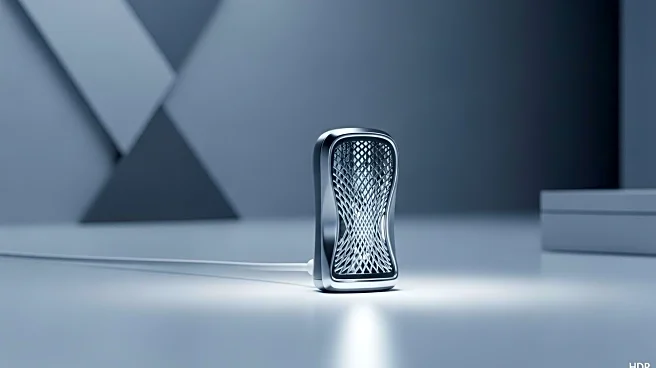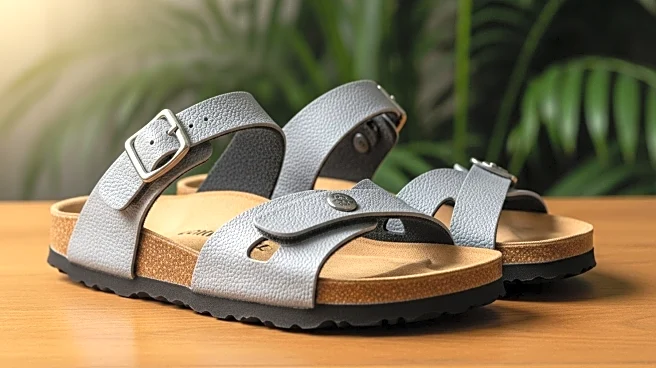What's Happening?
Two Indian researchers have won the Ig Nobel Prize for their innovative study on eliminating shoe odor using ultraviolet (UVC) light. The study, conducted by Vikash Kumar and Sarthak Mittal, focused on the bacterium Kytococcus sedentarius, which thrives in sweaty shoes and causes unpleasant odors. Their experiments demonstrated that a short exposure to UVC light effectively kills the bacteria and removes the smell. The researchers used shoes worn by university athletes, targeting the toe area where bacterial build-up is most significant. The study found that 2-3 minutes of UVC treatment was sufficient to eliminate the odor without damaging the shoe material. The researchers proposed a shoe rack equipped with UVC light to keep shoes odor-free, an idea that caught the attention of the Ig Nobel Prize committee.
Why It's Important?
The development of a UVC light solution for smelly shoes addresses a common problem faced by many households. By eliminating the bacteria responsible for shoe odor, this innovation could improve the user experience of shoe racks and reduce embarrassment associated with smelly footwear. The recognition by the Ig Nobel Prize highlights the potential for scientific solutions to everyday problems, encouraging further research and development in this area. Additionally, the use of UVC light for sterilization could have broader applications in other industries, promoting hygiene and reducing reliance on chemical deodorants.
What's Next?
The researchers' proposal for a UVC-equipped shoe rack could lead to commercial interest and development of new products aimed at improving household hygiene. As the study gains attention, it may inspire further research into the use of UVC light for other odor-related issues, potentially expanding its application beyond footwear. The recognition by the Ig Nobel Prize may also encourage other scientists to explore unconventional solutions to everyday problems, fostering innovation in various fields.
Beyond the Headlines
The study's success in using UVC light to eliminate shoe odor raises ethical considerations regarding the use of technology for personal hygiene. While effective, the potential health risks associated with UVC exposure must be carefully managed to ensure consumer safety. Additionally, the cultural significance of addressing shoe odor in India, where shoe racks are common, highlights the importance of context-specific solutions in scientific research.










